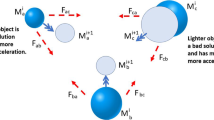Abstract
Customer churn is a significant issue and one of the most pressing challenges for large businesses. Companies are working to create methods to predict prospective client churn because it has such a direct impact on their revenues, particularly in the banking and finance industry. As a result, identifying factors that contribute to customer churn is critical in order to take the required steps to reduce churn. It is usually preferable for a bank (or any other firm or organization) to keep its existing customers rather than strive to recruit new ones. In our proposed work, different standard classification algorithms and boosting methods were compared. To improve the efficiency of these models, grid search and genetic algorithm were utilized for hyperparameter tuning. After analysing the outcomes of all algorithms, XGBoost was found to be the best algorithm for the used data set because it produced the most accurate findings. We attained a train accuracy of 95.28% and a test accuracy of 95.25%.
Access this chapter
Tax calculation will be finalised at checkout
Purchases are for personal use only
Similar content being viewed by others
References
** customer churn prediction based on integrated learning. In: 2nd international conference on mechanical, electronic, control and automation engineering (MECAE 2018), Advances in Engineering Research 149
Mozer MC, Wolniewicz R, Grimes DB (2000) Predicting subscriber dissatisfaction and improving retention in the wireless telecommunications industry. IEEE Trans Neural Netw 11:690–696
Au WH, Chan KCC, Yao X (2003) A novel evolutionary data mining algorithm with applications to churn prediction. IEEE Trans Evolut Comput 7(6)
He B, Shi Y, Wan Q, Zhao X (2014) Prediction of customer attrition of commercial banks based on svm model. Procedia Comput Sci 31:423–430, ISSN 1877–0509, https://doi.org/10.1016/j.procs.2014.05.286
Mishra A, Reddy US (2017) A comparative study of customer churn prediction in telecom industry using ensemble based classifiers, 721–725. https://doi.org/10.1109/ICICI.2017.8365230
Petkovski A, Risteska Stojkoska B, Trivodaliev K, Kalajdziski S (2016) Analysis of churn prediction: A case study on telecommunication services in Macedonia, 1–4. https://doi.org/10.1109/TELFOR.2016.7818903
Chen T, Guestrin C (2016) “XGBoost.” In: Proceedings of the 22nd ACM SIGKDD international conference on knowledge discovery and data mining. n. pag Crossref Web
Sharma A, Dr. Kumar P, Panigrahi (2011) A neural network based approach for predicting customer churn in cellular network services. Int J Comput Appl 27(11):0975–8887
Ismail MR, Awang MK, Rahman MNA, Makhtar M (2015) A multi-layer perceptron approach for customer churn prediction. Int J Multimedia Ubiquitous Eng 10(7):213–222
Qureshi SA, Rehman AS, Qamar AM, Kamal A, Rehman A (2013) Telecommunication subscribers’ churn prediction model using machine learning. In: Eighth international conference on digital information management (ICDIM), 131–136
A., M (2020) Churn for bank customers. Kaggle. https://www.kaggle.com/mathchi/churn-for-bank-customers
Siji George CG, Sumathi B (2020) Grid search tuning of hyperparameters in random forest classifier for customer feedback sentiment prediction. (IJACSA) Int J Adv Comput Sci Appl 11(9)
Wicaksono AS, Supianto AA (2018) Hyper parameter optimization using genetic algorithm on machine learning methods for online news popularity prediction. In: (IJACSA) Int J Adv Comput Sci Appl 9(12)
Lingaraj H (2016) A Study on genetic algorithm and its applications. Int J Comput Sci Eng 4:139–143
Shetye A, Tike R, Varun KV, Wadkar M (2017) A survey on applications and optimizations of genetic algorithm. Int J Eng Res Technol (IJERT) 06(03). https://doi.org/10.17577/IJERTV6IS030112
Author information
Authors and Affiliations
Editor information
Editors and Affiliations
Rights and permissions
Copyright information
© 2022 The Author(s), under exclusive license to Springer Nature Singapore Pte Ltd.
About this paper
Cite this paper
Kinge, A., Oswal, Y., Khangal, T., Kulkarni, N., Jha, P. (2022). Comparative Study on Different Classification Models for Customer Churn Problem. In: Agrawal, S., Gupta, K.K., Chan, J.H., Agrawal, J., Gupta, M. (eds) Machine Intelligence and Smart Systems. Algorithms for Intelligent Systems. Springer, Singapore. https://doi.org/10.1007/978-981-16-9650-3_12
Download citation
DOI: https://doi.org/10.1007/978-981-16-9650-3_12
Published:
Publisher Name: Springer, Singapore
Print ISBN: 978-981-16-9649-7
Online ISBN: 978-981-16-9650-3
eBook Packages: Intelligent Technologies and RoboticsIntelligent Technologies and Robotics (R0)




